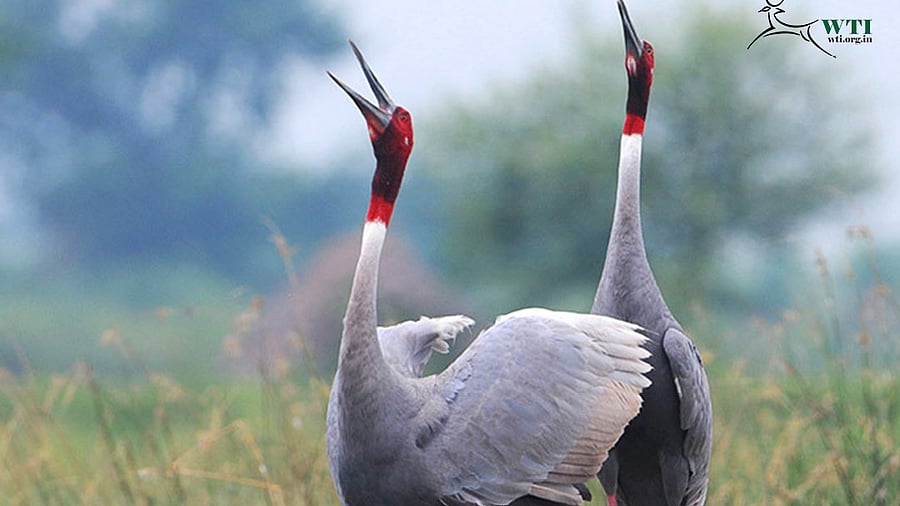
Sarus cranes
Credit: Samir K Sinha/WTI
Mumbai: Sarus crane holds cultural significance and helps small-scale farming, according to an analysis from India included in the 'Taking Animals into Account', a report by the Global Rewilding Alliance and ten partner organisations.
The study, released on World Wetlands Day, outlines impactful evidence that reintroducing and protecting key wild animal species could be a game-changer in tackling climate change, biodiversity loss, invasive species control, and water security challenges.
The report draws from eleven case studies across Asia, Europe, and Latin America, showing real-world success in rewilding wetlands.
While this study represents only an initial effort to summarize current knowledge on wildlife-ecosystem connections for wetlands, the results underscore the need to place wild animal species at the core of the ecological functional agenda of the Ramsar Convention on Wetlands.
A case study from India led by Dr Samir Kumar Sinha, Chief Ecologist, Wildlife Trust of India, on the potential influences of Sarus crane recovery on the wetland ecosystem services has recorded that the “Sarus crane holds cultural significance and thus provides cultural services in India. Its foraging behaviour – primarily digging for tubers and roots in muddy wetlands –creates ploughed patches that enhance plant diversity and support the growth of less dominant plant species. The crane also benefits small-scale farming, as their nesting sites provide foundations for pioneer grasses instead of the typical reed and sedge, which allow the farmers to till, plough, and sow crops earlier,” the WTI said.
The Ganges River basin hosts diverse wetlands vital for biodiversity, including the culturally significant but vulnerable Sarus crane, which depends on both natural and man-made wetlands. Habitat destruction has forced these cranes to breed in rice paddies, despite lower breeding success.
The Sarus crane serves as a key indicator of wetland health. Conservation efforts in eastern Uttar Pradesh by the Wildlife Trust of India have protected 700+ nests, leading to an 8 per cent annual population growth from 650 (2013) to 2,600 (2024).
The project safeguards wetlands, engages locals in biodiversity monitoring, and promotes community-led conservation. The species symbolize fidelity and feature in folklore and can help boost ecotourism, fostering positive human-wildlife interactions. Leveraging this local support can improve the species’ breeding success.
The report warns that the ‘defaunation’ of wetlands—where key animal species are lost—threatens their ability to provide essential ecosystem services that we all depend on.
With 85 per cent of global wetlands already degraded, conservation efforts must integrate the restoration of wild animals as a core strategy.
“This is not just about saving species—it’s about saving the very processes that make wetlands exist, maintain resilience in a changing world, and thrive with life,” said Magnus Sylvén, Director of Science-Policy-Practice for the Global Rewilding Alliance and lead author of the report.
“Rewilding - specifically the return of key wild animals - is a nature-based solution that brings practical hope in the face of the dual crises of climate change and biodiversity loss.”